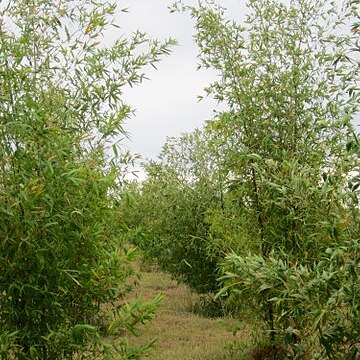Tree, 15-21 m high, grows in dense clumps; rhizomatous; culms arch gracefully above. Culm sheath with brown hairs, auricles absent. Leaf blade to 150 x 40 mm; ligule an unfringed membrane. Spikelet 7-16 mm long; lemma and palea hairy; anther 4-5 mm long, brown, numerous, hanging outside on very long filaments; style hairy. Reproduces freely from rhizomes as well as from seeds.
Rhizomatous, 15-21 m high, growing in dense clumps, culms arching gracefully at top. Leaf blades up to 150 mm long, up to 40 mm wide. Spikelets 7-16 mm long.

